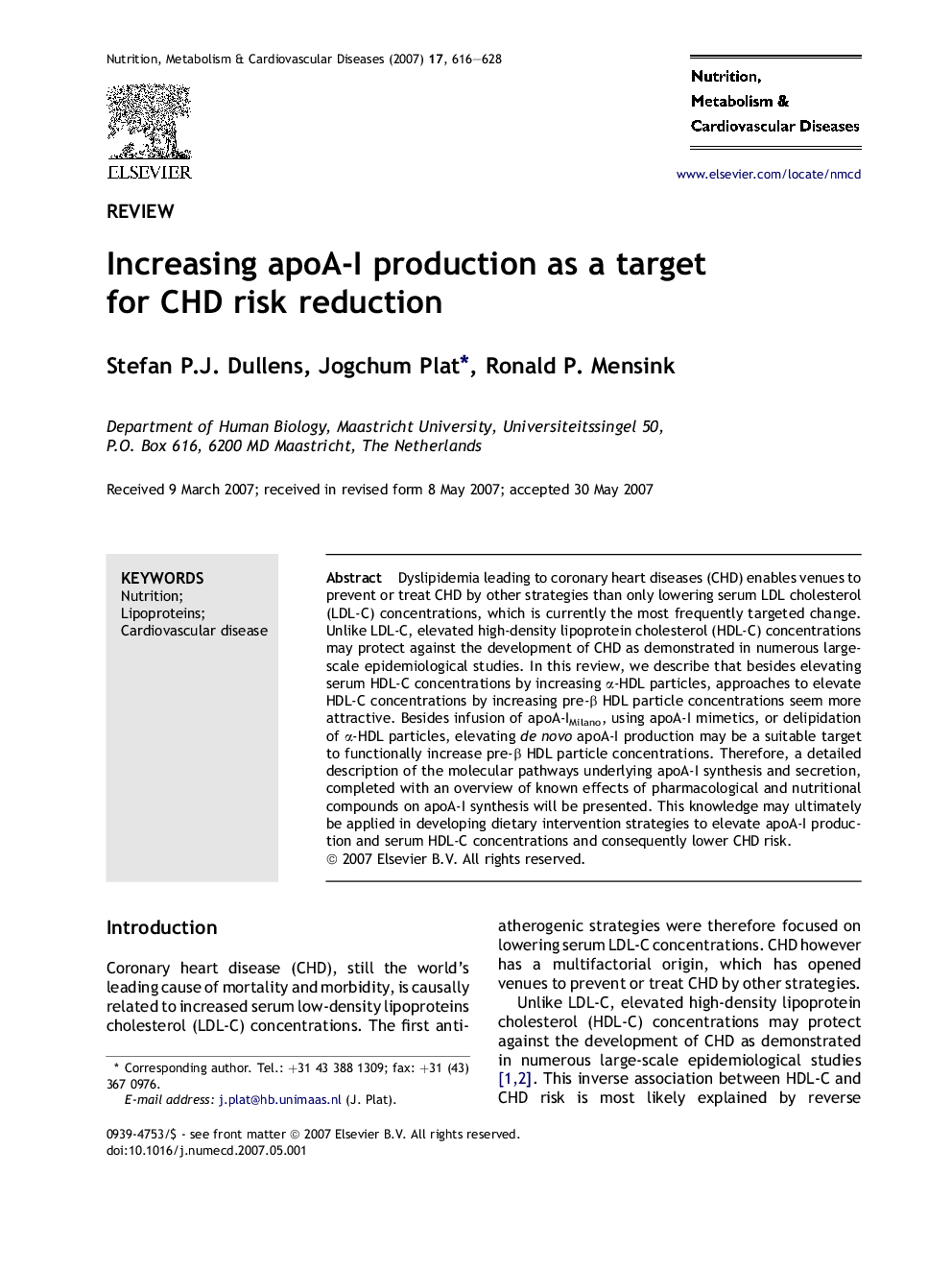| Article ID | Journal | Published Year | Pages | File Type |
|---|---|---|---|---|
| 3002595 | Nutrition, Metabolism and Cardiovascular Diseases | 2007 | 13 Pages |
Dyslipidemia leading to coronary heart diseases (CHD) enables venues to prevent or treat CHD by other strategies than only lowering serum LDL cholesterol (LDL-C) concentrations, which is currently the most frequently targeted change. Unlike LDL-C, elevated high-density lipoprotein cholesterol (HDL-C) concentrations may protect against the development of CHD as demonstrated in numerous large-scale epidemiological studies. In this review we describe that besides elevating serum HDL-C concentrations by increasing α-HDL particles, approaches to elevate HDL-C concentrations by increasing pre-β HDL particle concentrations seems more attractive. Besides infusion of apoA-IMilano, using apoA-I mimetics, or delipidation of α-HDL particles, elevating de novo apoA-I production may be a suitable target to functionally increase pre-β HDL particle concentrations. Therefore, a detailed description of the molecular pathways underlying apoA-I synthesis and secretion, completed with an overview of known effects of pharmacological and nutritional compounds on apoA-I synthesis will be presented. This knowledge may ultimately be applied in developing dietary intervention strategies to elevate apoA-I production and serum HDL-C concentrations and consequently lower CHD risk.
